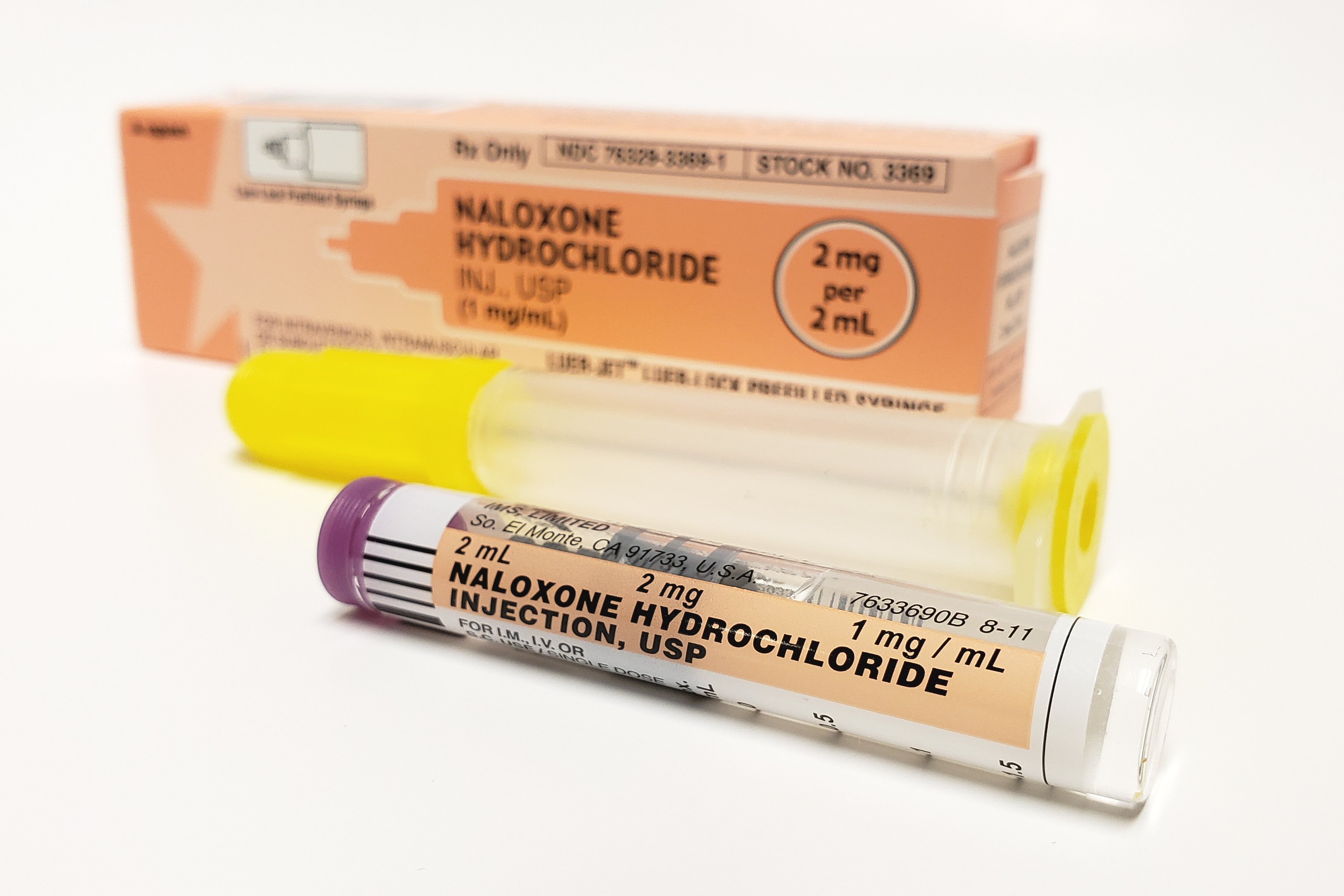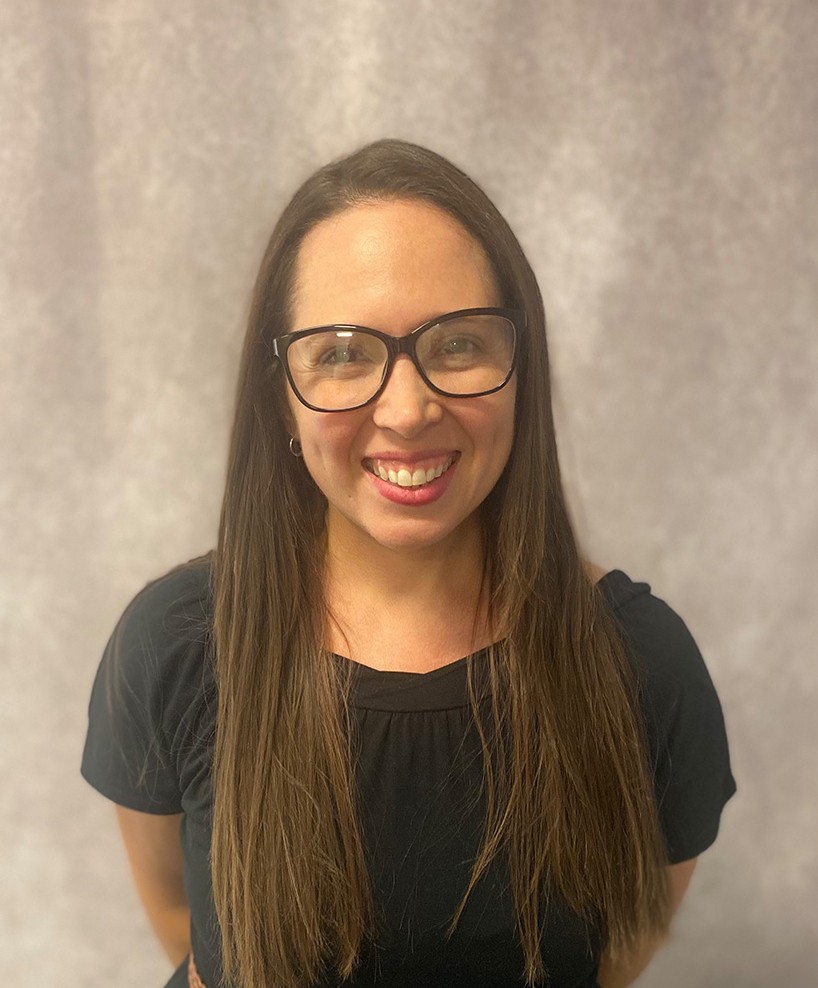Let’s talk about Naloxone

By Jennifer Fukuda • Addiction and Recovery Services Program Coordinator
Naloxone (also known by the brand name Narcan) is a lifesaving tool that has been used for decades to reverse the effects of an opioid overdose. It is easy to use, anyone can carry it, and it is completely legal. Carrying Naloxone is also a good way to help break down the stigmas associated with harm reduction. The more people who carry it in the community, the less stigmatized it will be, and the more people will benefit.
Teens should be encouraged to carry Naloxone too. In 2021, it was found that in adolescent deaths associated with overdose, fentanyl was identified 77.14% of the time (Friedman, 2022). We are in the midst of an unprecedented opioid epidemic; in Minnesota, we lose an average of four people each day due to drug overdose (2024a). Let’s explore what a Naloxone Access Point (NAP) is, how Naloxone works, and why this is important to our community.

JFCS believes in supporting each person we serve with holistic non-judgmental support. Our work focuses on education, prevention, and reducing the stigma and shame often associated with addiction. Our work is informed by the principles of harm reduction and being a NAP is important in the work we do to support members of our community.
JFCS recently renewed its partnership with Steve Rummler Hope Network’s NAP program. This means people in our community can stop by the JFCS office to pick up a lifesaving Naloxone kit and fentanyl testing strips without identification, without judgement, without cost, and without insurance. JFCS is one of over 25 NAPs in the metro area offering same-day judgement-free pickup.
Between 1996 and 2024, more than 26,500 opioid overdoses in the United States were reversed by laypersons using Naloxone (National Institute of Health, 2019). Opioids include morphine, heroin, codeine, oxycodone, hydrocodone, and fentanyl (this is not an exhaustive list). These drugs/medications, also known as opiates, painkillers, and narcotics, can be reversed with Naloxone. That said, if you recognize someone may be experiencing an overdose, administering Naloxone is always worth trying since many times illegal substances can contain fentanyl.
Naloxone works by attaching to opioid receptors and reversing and blocking the effects of other opioids (2024a). It works very quickly, within two to five minutes, and will not harm a person who is not experiencing and overdose. In other words, it can’t hurt. Depending on the amount of opioids in a person’s system, more than one dose of Naloxone may be necessary to reverse an overdose.
You may be wondering if you should carry Naloxone. The reasons to carry Naloxone are the same reasons to learn compression-only CPR; it is easy, there is no risk to you, and it can save a life. Naloxone is often associated with people who use illegal drugs. While it is relevant harm reduction for this community, it is also helpful to have if you know someone who suffers from chronic pain, is taking prescribed opioids for pain, or struggling with substance use disorder. It is also recommended if you are a parent or work with adolescents. As stated earlier, carrying Naloxone is also an important step in de-stigmatizing the conversation around it. Simply put, if you want to be prepared to save a life, carrying Naloxone is a good idea. Having more of it in the community means it will be more available when someone needs it.
If you or someone you care about is struggling with or impacted by addiction, please reach out for non-judgmental support. I can be reached at jfukuda@jfcsmpls.org or 952-542-4837. Please reach out if you have questions about Naloxone, would like to pick up Naloxone Overdose Response Kit at JFCS for yourself or your loved one, or would like a Naloxone training done for your community.
Naloxone saves lives. Things to remember:
- Always call 911 after administering Naloxone.
- Naloxone used on someone who is not experiencing an opioid overdose will not cause harm.
- Steve’s Law provides immunity to people seeking help for an overdose.
- There is no risk to carrying Naloxone because it is completely legal and those who use it are protected by Good Samaritan laws; this applies to teenagers in Minnesota as well.
- You do not need a prescription to carry Naloxone.
- Depending on the amount of opioids in a person’s system, you may need to administer Naloxone more than once.
- Naloxone does expire. Once it expires, dispose of it appropriately and visit us to pick up a new kit. Even expired Naloxone could save a life however, so if it is all you have in an overdose crisis, use it.
- It is important to stay with someone after you administer Naloxone until EMS arrives.
Helpful Resources:
- Learn how to recognize an overdose and how to use Narcan (naloxone) by watching this short video
- More information on Steve’s Law can be found here
- More information about Naloxone can be found here
- Another helpful article about Naloxone can be found here
- Read this article about how Narcan nasal spray is also available for free nearby
- The CDC’s FAQ on Naloxone
- Here is a location in Minneapolis where you can receive free Narcan nasal spray: Fire Station 21, 3209 E 38th St, Minneapolis, MN 55406 (Timar-Wilcox, 2024). It is also sold at pharmacies.
References:
- Friedman, M. (2022, April 12). Trends in drug overdose deaths among US adolescents, January 2010 to June 2021. JAMA. https://jamanetwork.com/journals/jama/fullarticle/2790949
- Opioids and substance use resources. Opioids – City of Minneapolis. (2024). https://www2.minneapolismn.gov/government/departments/health/current-concerns/opioids/#:~:text=Four%20Minnesotans%20die%20each%20day,to%202022%20increased%20by%2024%25.
- Opioid Crisis. HRSA. (2023). https://www.hrsa.gov/opioids#:~:text=The%20Nation%20is%20in%20the,critical%20to%20fighting%20this%20epidemic.
- U.S. Department of Health and Human Services. (2019, April 11). How naloxone saves lives in opioid overdose. National Institutes of Health. https://nida.nih.gov/videos/how-naloxone-saves-lives-in-opioid-overdose
- U.S. Department of Health and Human Services. (2024a, February 12). Naloxone drugfacts. National Institutes of Health. https://nida.nih.gov/publications/drugfacts/naloxone#:~:text=Points%20to%20remember-,Naloxone%20is%20a%20medicine%20that%20rapidly%20reverses%20an%20opioid%20overdose,with%20opioids%20in%20their%20systems.
